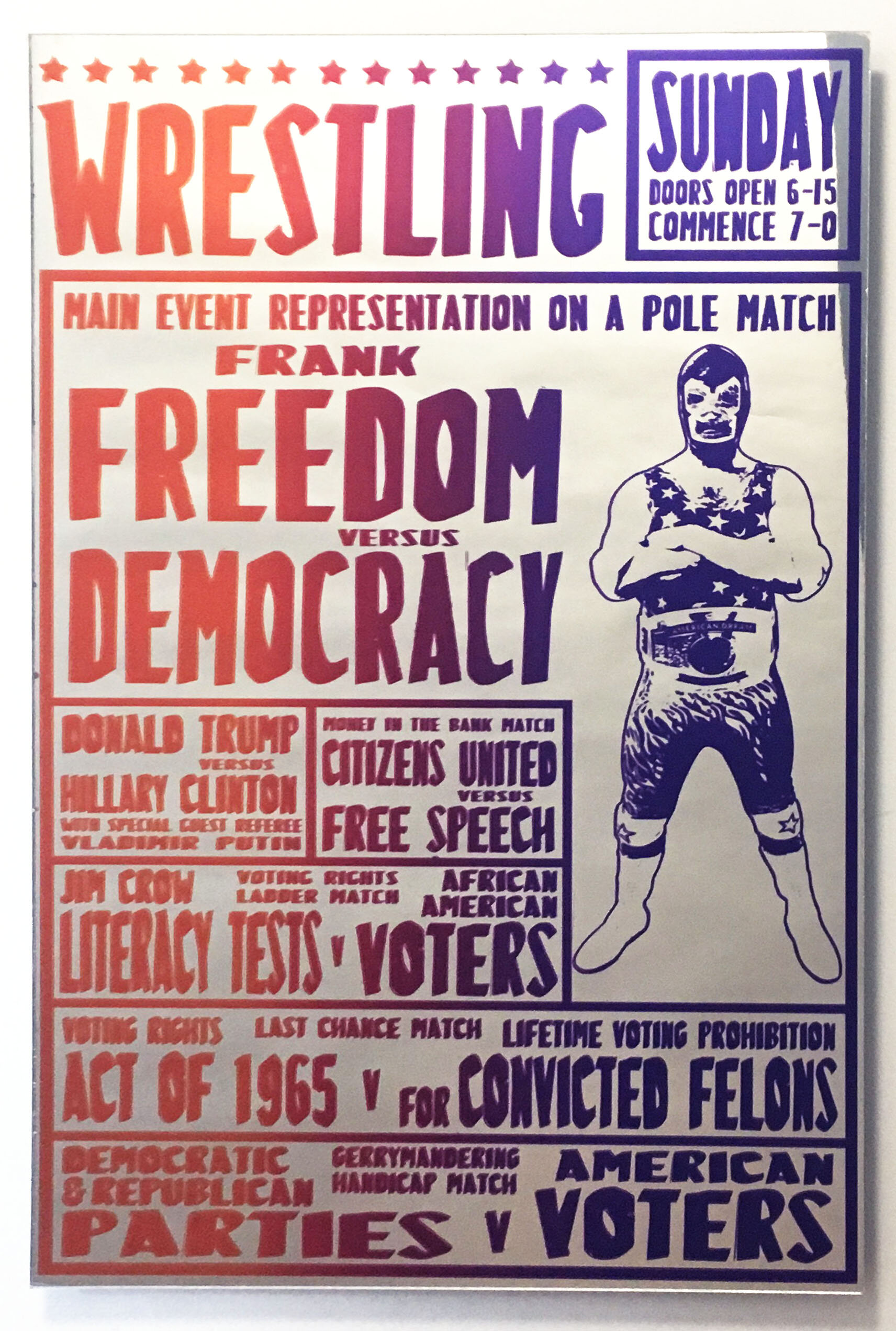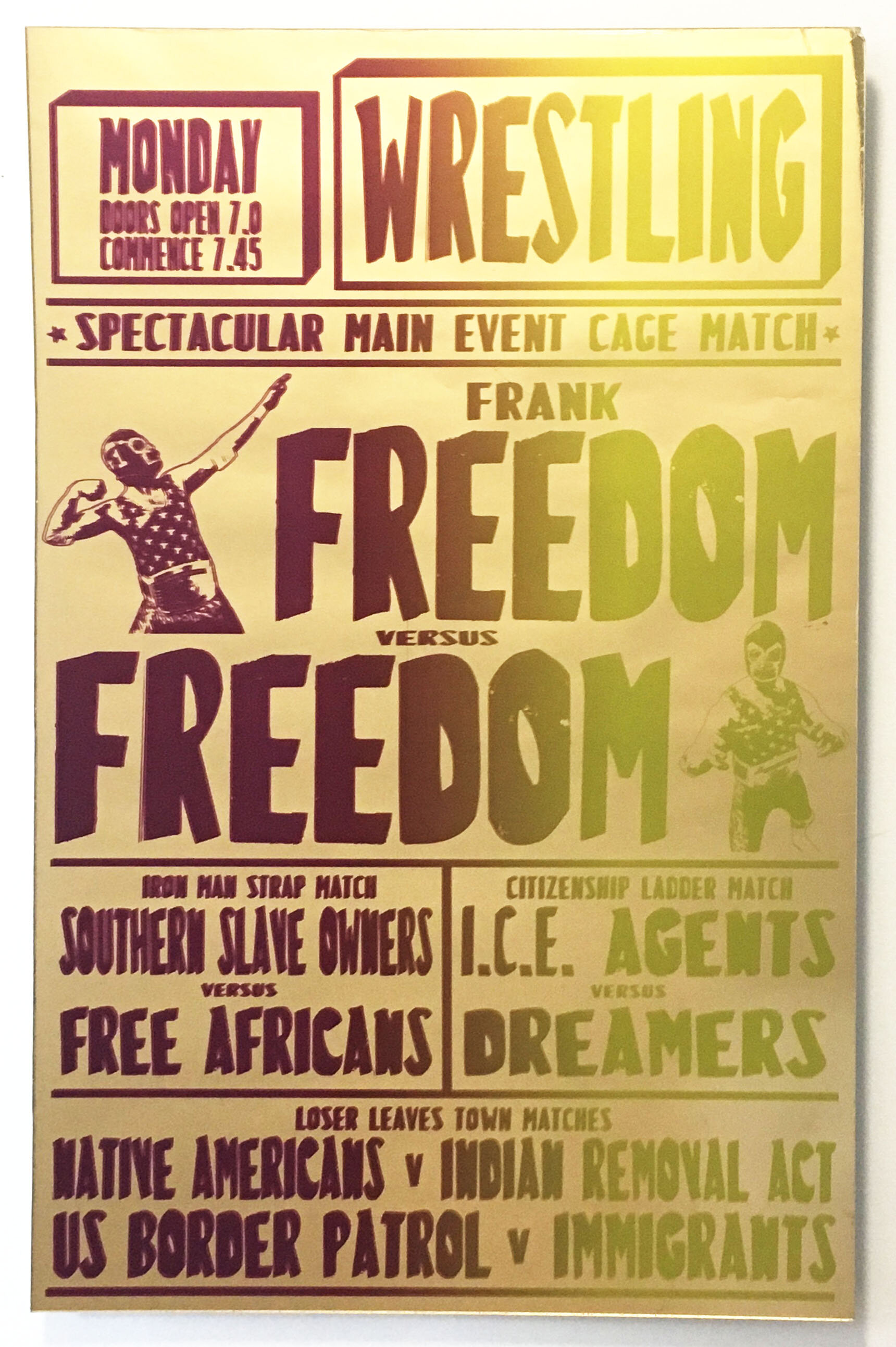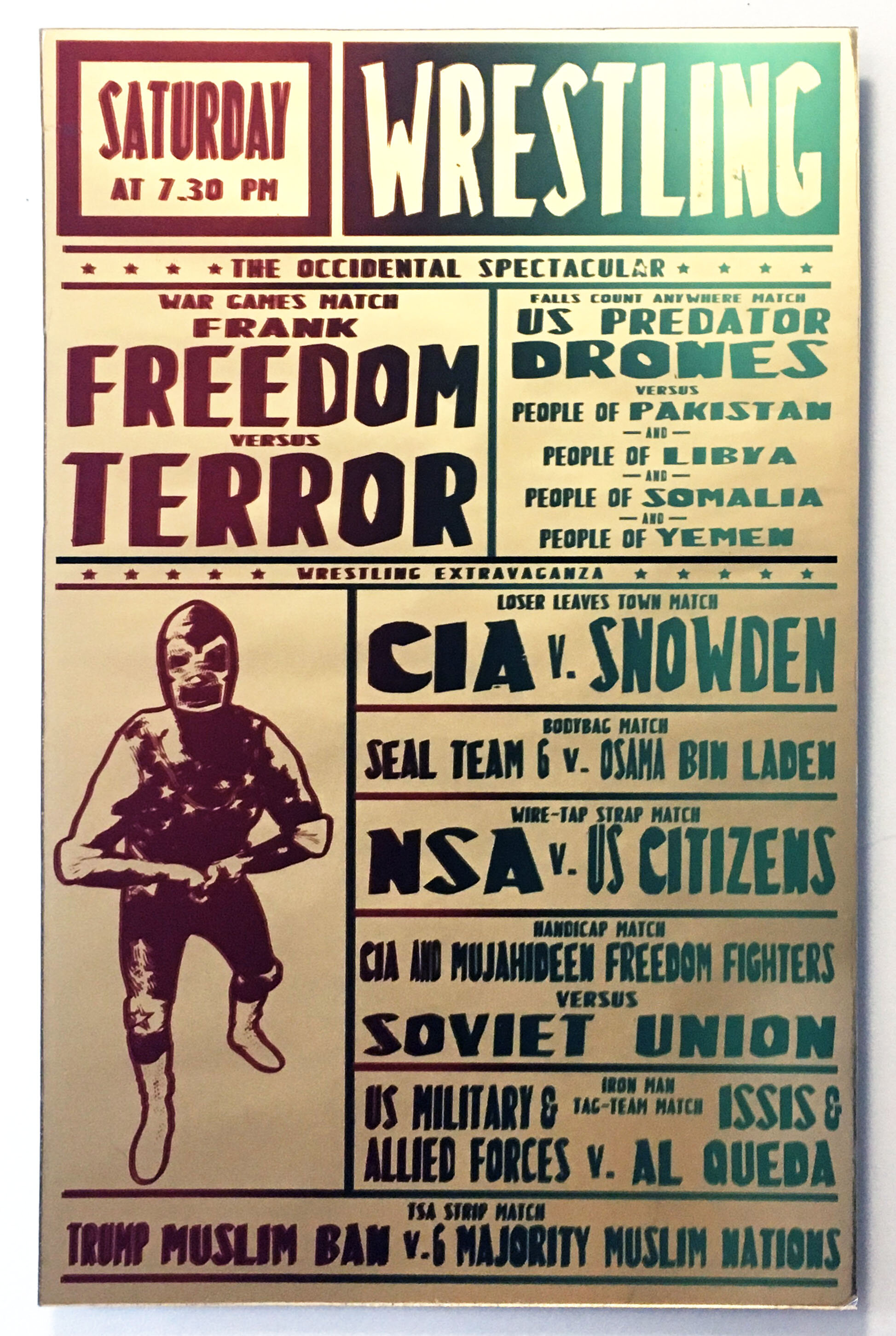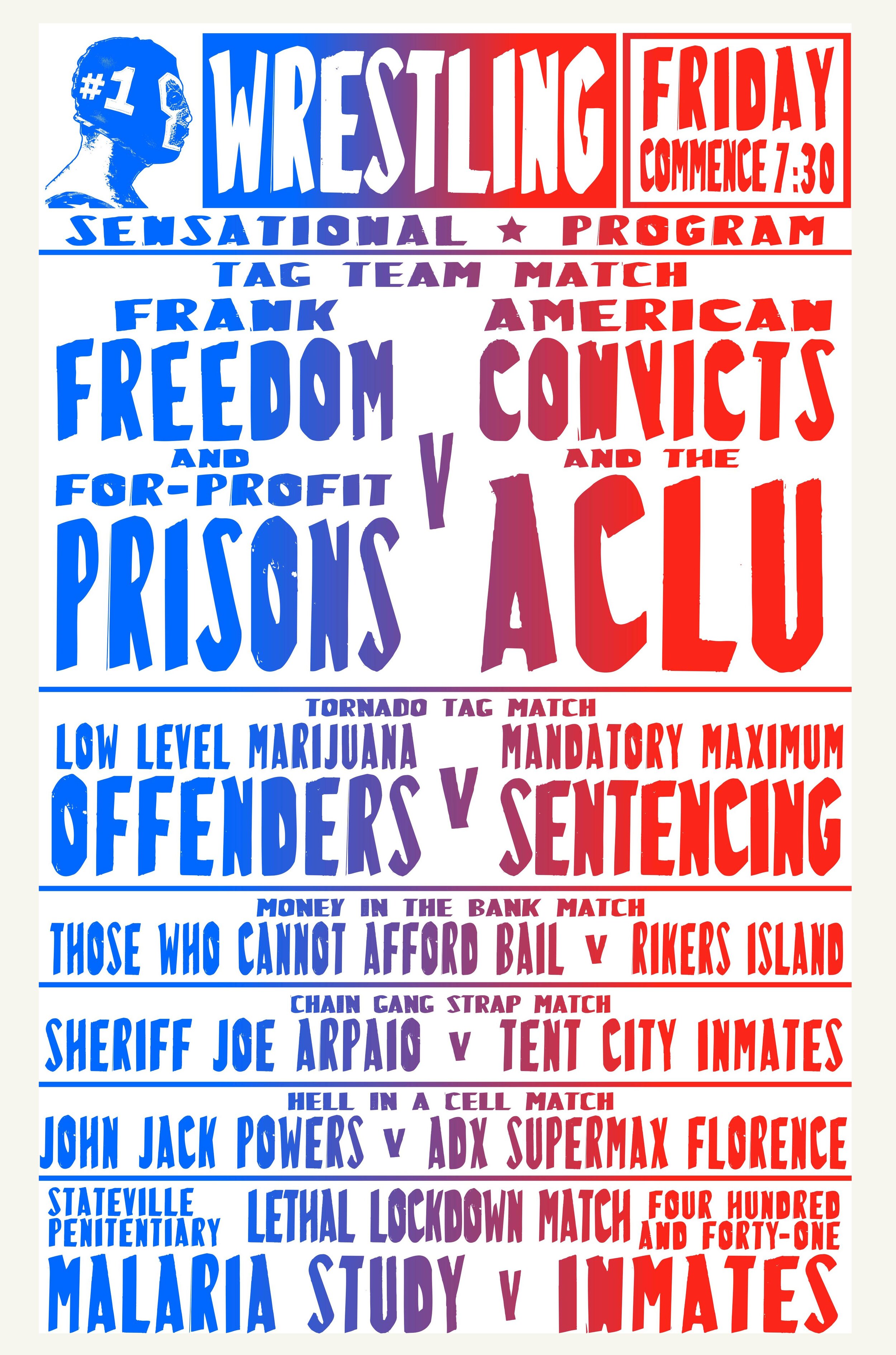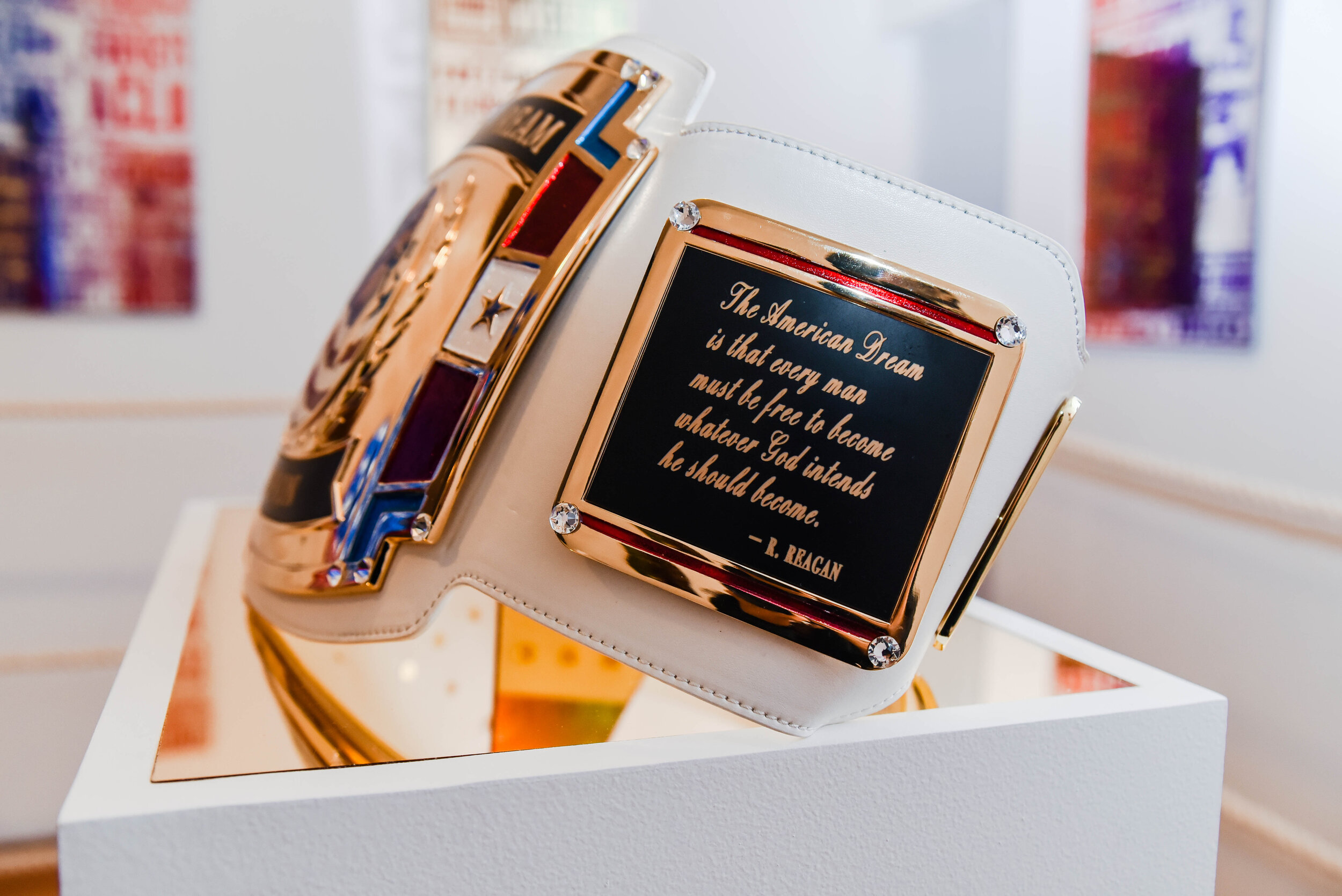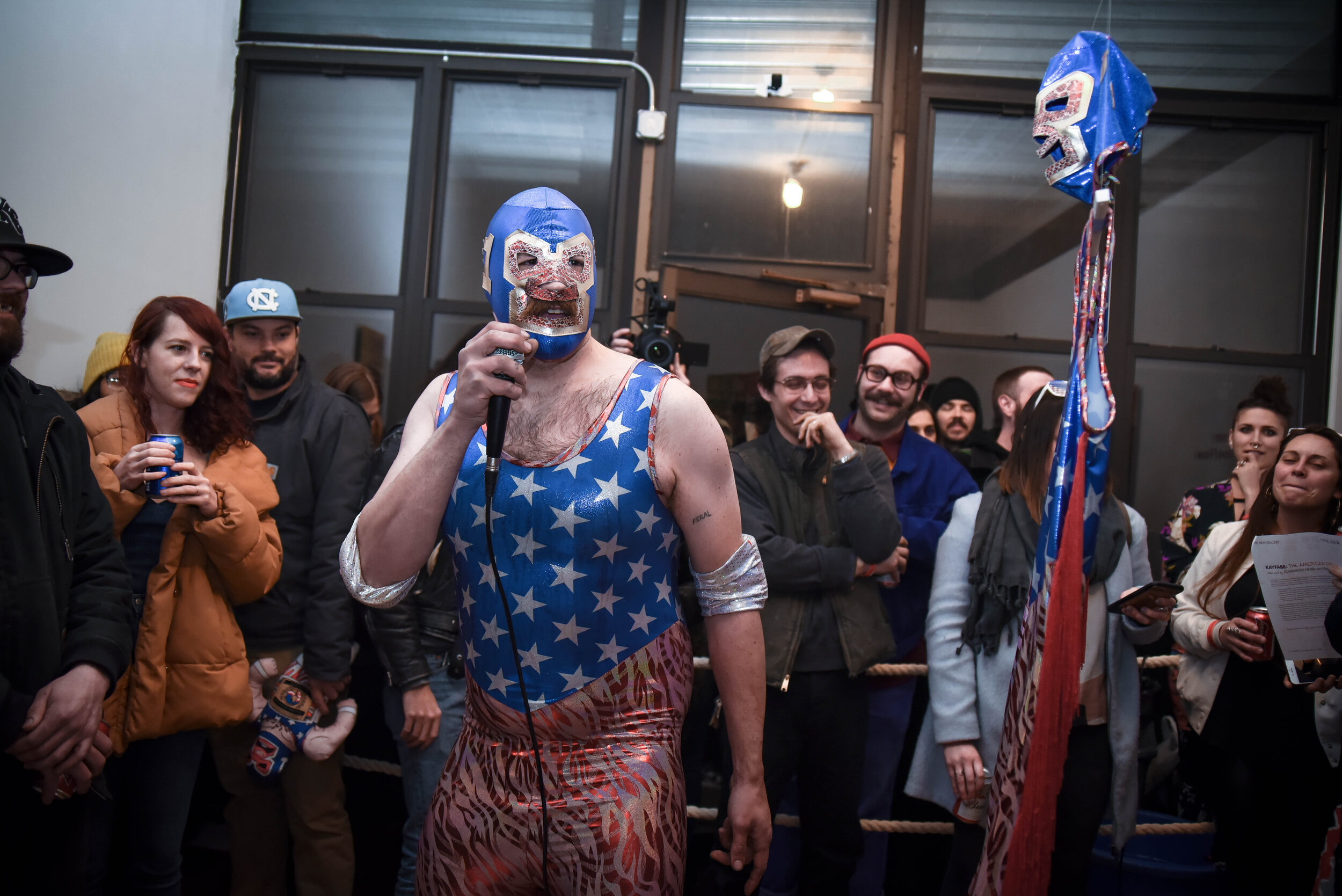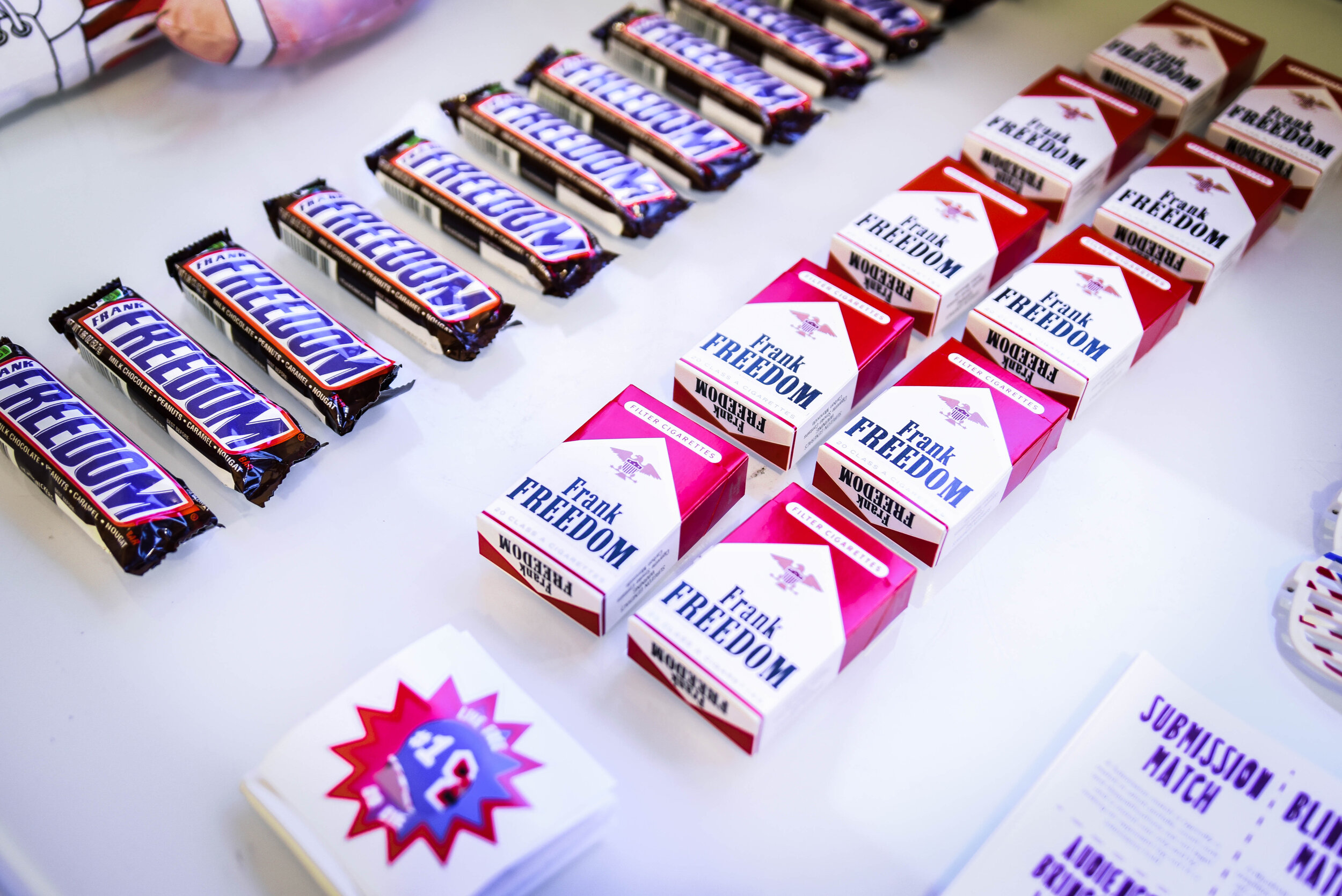
Kayfabe: The American Dream
2018 | dimensions variable | holographic spandex, printed vinyl, acrylic mirror, rope, leather, mdf
The New Gallery | Brooklyn, New York
Kayfabe: The American Dream is made in collaboration with artist and musician FRANK that consists of performances and sculptural objects centered around the fictional WWE character “Frank Freedom”. This ongoing project uses professional wrestling and the concept of “Kayfabe” as a vessel to interrogate The American Dream and the roll of American ideology in the US’s history of State-sanctioned violence. Kayfabe is a professional wrestling industry term for the portrayal of wrestling events as "real" or “true” and not of a staged or predetermined nature, particularly rivalry narratives between performers. It has become a code word for maintaining this "reality" within the direct or indirect presence of the general public.
The character of Frank Freedom is a heel (a villain)—he embodies patriotic fervor, American mythology and exceptionalism. Rather than simply a Trumpian character, his allegiance spans both isles which have each historically acted in service of manifest destiny at the expense of Native peoples, POC, immigrants and less powerful nations throughout the world.
The work consists of a performances as well as branded merchandise—plush Frank Freedom wrestling dolls, branded Snickers bars, cigarettes and stickers—along with sculptural objects which include: a spandex and leather costume, leather and pressed brass title belt, white roped wrestling ring and a series of 9 wrestling “posters” made with printed vinyl on acrylic mirror. Each “poster” fuses the visual language of 1970’s Lucha Libre and 1980’s American wrestling posters—industries whose histories are deeply intertwined—and features Frank Freedom vs. a theme. Themes correspond to different frameworks of state-sanctioned violence throughout US history with each supporting “match” in reference to a specific historical event within that theme.
Arranged around the perimeter of the exhibition space, the posters were only legible if viewers entered the space by crawling through the wrestling ropes. As viewers are thus forcibly put into the ring, surrounded by mirrored posters in which their own visages are reflected and refracted throughout the space, the boundary between spectator and performer becomes less clear. When the live performance of Frank Freedom (played by FRANK) begins in the ring, this boundary breaks down all together.


